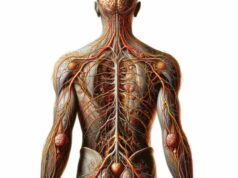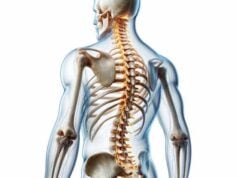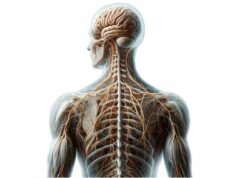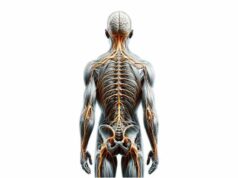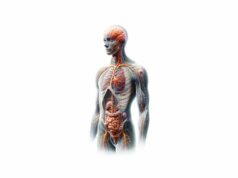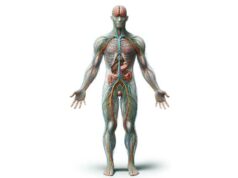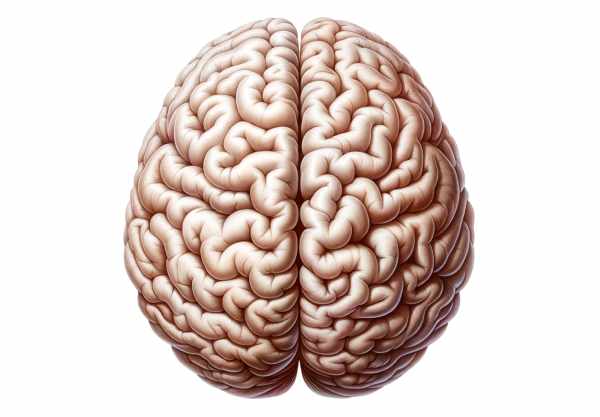
The brain is the command center of the human body, responsible for controlling every function from basic life-sustaining processes to complex cognitive abilities. It regulates everything from movement and sensation to memory, emotions, and behavior. As the seat of consciousness and personality, understanding the brain’s structure and functions is vital for diagnosing and treating neurological disorders. This comprehensive guide delves into the brain’s detailed anatomy, explores its diverse functions, examines common disorders that affect its operation, and reviews cutting-edge diagnostic techniques and treatment strategies. Practical healthy tips and lifestyle modifications are provided to help you maintain and optimize brain health throughout life.
Table of Contents
- Anatomical Overview
- Cerebral Structures
- Cerebellum & Brainstem
- Limbic System & Integrative Areas
- Physiological Functions
- Common Brain Disorders
- Diagnostic Methods
- Treatment Approaches
- Nutritional & Supplement Support
- Lifestyle & Preventive Tips
- Trusted Resources
- Frequently Asked Questions
Anatomical Overview
The brain is an intricately structured organ, divided into several major regions that each serve distinct functions. Enclosed within the skull, it is protected by three layers of meninges and bathed in cerebrospinal fluid, which cushions against trauma and maintains a stable environment. At its highest level, the brain is composed of the cerebrum, cerebellum, and brainstem. The cerebrum, the largest part, is responsible for higher cognitive functions and is divided into two hemispheres. Below it, the cerebellum fine-tunes motor control and balance, while the brainstem governs vital autonomic functions such as breathing, heart rate, and blood pressure. This complex architecture enables the brain to coordinate an astonishing range of activities, from basic survival to sophisticated reasoning.
Cerebral Structures
The cerebrum, accounting for nearly 85% of the brain’s weight, is the epicenter of higher cognitive functions. It is divided into two hemispheres and further subdivided into four main lobes, each with unique roles.
Frontal Lobe
- Location and Functions:
Located at the front of the brain, the frontal lobe is the seat of executive functions. It governs decision-making, planning, problem solving, and social behavior. It is also responsible for voluntary movement via the primary motor cortex and plays a role in speech production through Broca’s area. - Behavior and Personality:
The frontal lobe influences personality, emotion regulation, and impulse control. Damage in this area can lead to changes in behavior and difficulties with complex decision-making.
Parietal Lobe
- Sensory Processing:
Situated behind the frontal lobe, the parietal lobe processes sensory information from various parts of the body. It interprets touch, temperature, pain, and pressure. - Spatial Awareness:
This lobe integrates sensory input to provide spatial orientation and body awareness, essential for coordinating movements and interacting with the environment.
Temporal Lobe
- Auditory Functions:
The temporal lobe, found on the sides of the brain, houses the primary auditory cortex. It processes sound and is crucial for language comprehension, especially in the region known as Wernicke’s area. - Memory and Emotion:
It plays a key role in memory formation, particularly through the hippocampus, and is involved in processing emotions, with the amygdala contributing to the response to emotional stimuli.
Occipital Lobe
- Visual Processing:
The occipital lobe, located at the rear of the brain, is dedicated to interpreting visual information. It processes various aspects of vision such as color, shape, and motion, enabling us to perceive and understand our visual environment.
Corpus Callosum
- Interhemispheric Communication:
This thick bundle of nerve fibers connects the left and right cerebral hemispheres, facilitating the exchange of information between them. It ensures coordinated function and integration of cognitive processes across both halves of the brain.
Together, these cerebral structures form the foundation for thought, perception, and behavior, making them critical to our understanding of brain function.
Cerebellum & Brainstem
Beneath the cerebrum lie the cerebellum and brainstem, which manage essential motor and autonomic functions.
Cerebellum
- Structure:
The cerebellum is located at the back of the brain, beneath the occipital lobes, and is divided into two hemispheres with a central structure called the vermis. - Functions:
It coordinates voluntary movements, maintains balance, and ensures smooth, precise motor control. The cerebellum integrates sensory inputs with motor commands to adjust movements and maintain posture.
Brainstem
- Components:
The brainstem includes the midbrain, pons, and medulla oblongata. It connects the cerebrum with the spinal cord and serves as a crucial relay station. - Vital Autonomic Functions:
The brainstem controls life-sustaining functions such as breathing, heart rate, and blood pressure. It also manages reflexes like swallowing, coughing, and vomiting, ensuring the body responds appropriately to internal and external changes. - Sensory and Motor Integration:
In addition to autonomic control, the brainstem is involved in transmitting sensory and motor signals between the brain and body, contributing to overall coordination and alertness.
These structures work together seamlessly to regulate movement, balance, and vital autonomic functions, highlighting the brainstem and cerebellum’s critical role in sustaining life.
Limbic System & Integrative Areas
The limbic system is a collection of interconnected structures deep within the brain that plays a pivotal role in emotion, memory, and behavior.
Key Components
- Hippocampus:
Critical for forming new memories and converting short-term memory into long-term storage. Damage to the hippocampus is closely linked with memory impairments and conditions like Alzheimer’s disease. - Amygdala:
Processes emotions such as fear, pleasure, and anger. It influences emotional learning and the formation of emotional memories, shaping how we react to various stimuli. - Hypothalamus:
Acts as the brain’s regulatory center, maintaining homeostasis by controlling hunger, thirst, body temperature, and circadian rhythms. It also links the nervous system to the endocrine system via the pituitary gland. - Cingulate Gyrus:
Involved in emotion formation, processing, and regulation, as well as pain perception and behavioral responses.
Integration with Other Brain Regions
The limbic system interacts with the cerebral cortex, brainstem, and other areas to integrate emotional and cognitive processes. This integration is essential for adaptive behavior, decision-making, and forming social bonds.
Physiology of Brain Functions
The brain’s physiology underpins every aspect of human behavior and bodily function. It coordinates complex neural networks and biochemical processes to support cognition, sensation, movement, and homeostasis.
Cognitive Processing
- Memory and Learning:
Neural circuits in the hippocampus and prefrontal cortex enable memory formation, learning, and problem solving. Synaptic plasticity—the ability of synapses to strengthen or weaken over time—is fundamental to learning and adaptation. - Executive Function:
The prefrontal cortex manages executive functions such as planning, decision-making, and impulse control. This region is essential for abstract thinking and goal-directed behavior.
Sensory Integration
- Visual and Auditory Processing:
The occipital lobe processes visual inputs, while the temporal lobe handles auditory information. Together, these areas transform sensory stimuli into meaningful perceptions. - Somatosensory Processing:
The parietal lobe’s somatosensory cortex integrates tactile, thermal, and pain signals from the body, allowing us to interpret and respond to our environment.
Motor Coordination
- Voluntary Movement:
The motor cortex in the frontal lobe sends signals to muscles via the spinal cord, orchestrating voluntary movements. The cerebellum refines these signals to ensure smooth, coordinated motion. - Balance and Posture:
The cerebellum and brainstem work in tandem to maintain balance and posture, adjusting muscle tone in response to changes in position.
Autonomic and Endocrine Regulation
- Autonomic Control:
The brainstem regulates vital functions such as breathing, heart rate, and blood pressure through autonomic pathways. The hypothalamus also plays a crucial role in controlling hormonal release via the pituitary gland. - Homeostatic Maintenance:
The brain continuously monitors internal conditions and adjusts physiological processes to maintain equilibrium, including temperature regulation, fluid balance, and metabolic activity.
Emotional and Behavioral Processing
- Emotion Regulation:
The amygdala and limbic system process emotional responses, while the prefrontal cortex modulates these reactions to produce appropriate behavior. - Stress Response:
The hypothalamic-pituitary-adrenal (HPA) axis is activated in response to stress, releasing cortisol to help the body manage stressors. Chronic activation of this system can impact brain function and overall health.
These physiological processes underscore the brain’s role as the central hub for integrating sensory information, coordinating movement, regulating vital functions, and shaping behavior and emotions.
Common Disorders Affecting the Brain
A range of conditions can compromise brain function, affecting everything from memory and cognition to movement and emotional regulation. Early diagnosis and treatment are critical to mitigating these impacts and preserving quality of life.
Stroke
- Ischemic Stroke:
Occurs when a blood clot blocks a cerebral artery, depriving brain tissue of oxygen. Symptoms include sudden weakness, difficulty speaking, and vision problems. Prompt intervention with clot-busting medications is essential. - Hemorrhagic Stroke:
Involves bleeding into or around the brain due to a ruptured vessel, leading to increased intracranial pressure and damage. Emergency care is crucial to limit brain injury.
Neurodegenerative Diseases
- Alzheimer’s Disease:
Characterized by progressive memory loss, cognitive decline, and behavioral changes, this condition is associated with the accumulation of amyloid plaques and tau tangles. - Parkinson’s Disease:
A movement disorder resulting from the loss of dopamine-producing neurons in the substantia nigra. Symptoms include tremors, rigidity, and bradykinesia (slowness of movement). - Huntington’s Disease:
A genetic disorder that causes progressive degeneration of nerve cells, leading to movement disorders, cognitive decline, and psychiatric symptoms.
Epilepsy
Epilepsy is defined by recurrent, unprovoked seizures resulting from abnormal electrical activity in the brain. Seizures can affect motor control, consciousness, and sensory perception, requiring long-term management with antiepileptic medications.
Multiple Sclerosis (MS)
MS is an autoimmune condition in which the immune system attacks the myelin sheath surrounding nerve fibers, impairing signal transmission. Symptoms vary widely, from muscle weakness and coordination issues to cognitive dysfunction and vision problems.
Traumatic Brain Injury (TBI)
TBI results from external force, such as a blow to the head, leading to varying degrees of brain damage. Concussions are a mild form, while severe TBI can result in long-term cognitive, physical, and emotional impairments.
Brain Tumors
Brain tumors may be benign or malignant and can disrupt normal brain function depending on their size and location. They can cause headaches, seizures, and neurological deficits, with treatment options ranging from surgical resection to radiation and chemotherapy.
Migraines and Headaches
Migraines are severe headaches often accompanied by nausea, visual disturbances, and sensitivity to light and sound. While their exact cause remains unclear, they are thought to involve complex neural and vascular mechanisms.
Psychiatric Disorders
- Anxiety and Depression:
These conditions affect mood, cognition, and behavior, often linked to imbalances in neurotransmitter systems. Treatment typically involves psychotherapy, medication, and lifestyle modifications. - Bipolar Disorder and Schizophrenia:
Severe psychiatric disorders that can alter perception, cognition, and emotional regulation. Comprehensive treatment usually involves a combination of antipsychotic medications, mood stabilizers, and supportive therapies.
Understanding these disorders is critical for early detection and effective management, enabling targeted treatments that can improve outcomes and quality of life.
Diagnostic Methods for Brain Health
Accurate diagnosis of brain conditions requires a comprehensive approach that includes clinical evaluations, advanced imaging techniques, and specialized tests.
Clinical Evaluations
- Neurological Examination:
A detailed assessment of cognitive function, motor skills, sensory responses, and reflexes. This evaluation helps identify deficits and guides further diagnostic testing. - Patient History:
In-depth interviews regarding symptom onset, duration, and progression provide crucial context for diagnosis. Family history and previous medical events are also important.
Imaging Techniques
- Magnetic Resonance Imaging (MRI):
MRI offers high-resolution images of brain structures, making it invaluable for detecting tumors, strokes, neurodegenerative changes, and other abnormalities. Functional MRI (fMRI) can also assess brain activity by tracking blood flow. - Computed Tomography (CT) Scans:
CT imaging is especially useful in acute settings, such as after head trauma or stroke, due to its speed in detecting hemorrhages, fractures, and other structural injuries. - Positron Emission Tomography (PET):
PET scans provide metabolic and functional information, helping to identify areas of abnormal brain activity and distinguish between benign and malignant processes. - Electroencephalography (EEG):
EEG measures electrical activity in the brain, crucial for diagnosing epilepsy, sleep disorders, and assessing brain function during surgery. - Lumbar Puncture:
Analysis of cerebrospinal fluid (CSF) obtained through a lumbar puncture can detect infections, inflammatory conditions, and markers of neurodegenerative diseases.
Neuropsychological Testing
- Cognitive Assessments:
Standardized tests evaluate memory, attention, language, and executive function. These tests help diagnose dementia, brain injury, and other cognitive disorders. - Behavioral Assessments:
Evaluations of mood, behavior, and personality changes provide insights into conditions such as depression and schizophrenia.
Genetic and Molecular Testing
- Genetic Screening:
Tests for specific gene mutations can diagnose hereditary brain disorders, such as Huntington’s disease or familial Alzheimer’s disease. - Molecular Markers:
Analysis of biomarkers in blood or CSF can provide diagnostic clues for neurodegenerative conditions.
By integrating these diagnostic techniques, clinicians can obtain a detailed understanding of brain structure and function, leading to precise diagnoses and personalized treatment plans.
Treatment Approaches and Interventions
Treating brain disorders requires a multidisciplinary approach, combining pharmacological therapies, surgical interventions, rehabilitation, and emerging technologies. The chosen strategy depends on the specific condition, its severity, and the overall health of the patient.
Pharmacological Treatments
- Antiepileptic Drugs (AEDs):
Medications such as valproate, lamotrigine, and levetiracetam stabilize neuronal activity and reduce the frequency and severity of seizures. - Neuroprotective Agents:
Drugs aimed at reducing neuronal damage and slowing neurodegeneration, such as cholinesterase inhibitors and NMDA receptor antagonists for Alzheimer’s disease. - Dopaminergic Medications:
For Parkinson’s disease, medications like levodopa and dopamine agonists help restore dopamine levels, improving motor function. - Antidepressants and Anxiolytics:
SSRIs, SNRIs, and benzodiazepines are used to manage mood disorders and anxiety, supporting overall brain function. - Antipsychotics:
Used in the treatment of schizophrenia and bipolar disorder, these medications help regulate neurotransmitter imbalances and manage psychotic symptoms.
Surgical Interventions
- Tumor Resection:
Surgical removal of brain tumors, which may involve microsurgery or minimally invasive techniques, is essential for relieving pressure and preserving neurological function. - Deep Brain Stimulation (DBS):
DBS involves implanting electrodes in specific brain regions to modulate abnormal neural activity. It is particularly effective in treating movement disorders like Parkinson’s disease. - Epilepsy Surgery:
In cases of refractory focal epilepsy, surgical resection of the epileptogenic zone can significantly reduce or eliminate seizures. - Vagus Nerve Stimulation (VNS):
This device-based therapy sends electrical impulses to the vagus nerve to reduce seizure frequency and improve mood regulation.
Rehabilitation and Supportive Therapies
- Physical Therapy:
Customized exercise programs help improve motor function, balance, and coordination in patients recovering from brain injuries or neurodegenerative conditions. - Occupational Therapy:
Focuses on regaining the skills necessary for daily living, improving independence, and adapting to functional limitations. - Speech and Language Therapy:
Essential for patients with communication or swallowing difficulties resulting from neurological damage. - Cognitive Rehabilitation:
Neuropsychological interventions and brain training exercises help improve memory, attention, and other cognitive functions in patients with brain injuries or dementia.
Emerging and Innovative Therapies
- Stem Cell Therapy:
Experimental treatments using stem cells to regenerate damaged brain tissue hold promise for conditions like stroke and traumatic brain injury. - Gene Therapy:
Research into correcting genetic mutations that cause neurodegenerative diseases is underway, offering hope for treating conditions like Huntington’s disease. - Transcranial Magnetic Stimulation (TMS):
TMS uses magnetic fields to stimulate specific brain regions, effectively treating depression and being investigated for other neurological conditions. - Neurofeedback and Brain-Computer Interfaces:
These emerging technologies train patients to control brain activity, aiding in rehabilitation and improving communication in individuals with severe disabilities.
A comprehensive, personalized treatment plan that integrates these diverse approaches is critical for managing brain disorders and enhancing patient quality of life.
Nutritional & Supplementary Support for Brain Health
Optimal brain function is closely tied to nutrition and targeted supplementation. A balanced diet combined with specific supplements can improve cognitive performance, protect against oxidative stress, and support overall neural health.
Essential Nutrients
- Omega-3 Fatty Acids:
Found in fish oil and flaxseed, omega-3s support neuronal membrane integrity, reduce inflammation, and enhance cognitive function. - Vitamin B12 and Folate:
Crucial for maintaining myelin sheath integrity and neurotransmitter synthesis, these vitamins help prevent cognitive decline and support memory. - Vitamin D:
Essential for immune modulation and brain health, vitamin D influences neuroplasticity and may lower the risk of neurodegenerative diseases. - Magnesium:
Important for nerve transmission and muscle relaxation, magnesium helps prevent excitotoxicity and supports overall brain function. - Antioxidants:
Vitamins C and E, along with selenium, protect brain cells from oxidative stress, which is implicated in aging and neurodegenerative conditions.
Herbal Supplements
- Ginkgo Biloba:
Known for enhancing cerebral blood flow, Ginkgo biloba may improve memory and cognitive performance, particularly in older adults. - Curcumin:
The active compound in turmeric, curcumin, has potent anti-inflammatory and antioxidant properties, potentially protecting neurons from damage. - Bacopa Monnieri:
An adaptogenic herb that enhances memory formation and reduces anxiety, supporting cognitive function and mental clarity. - Panax Ginseng:
Believed to boost cognitive performance, ginseng can improve mental alertness and reduce mental fatigue.
Dietary Practices
- Whole Foods Diet:
Prioritize nutrient-dense foods like leafy greens, berries, lean proteins, and whole grains to supply essential vitamins and minerals. - Hydration:
Adequate water intake ensures proper blood flow to the brain and supports overall cellular function. - Consistent Meal Timing:
Regular meals help stabilize blood sugar levels, providing a steady supply of energy for optimal brain function.
Integrating these nutritional strategies and supplements into your daily routine can enhance brain performance, protect against cognitive decline, and promote overall neural health.
Lifestyle & Preventive Tips for Brain Health
Maintaining brain health requires a proactive lifestyle that supports cognitive function, emotional well-being, and neural resilience. Implementing the following lifestyle practices can help safeguard your brain over the long term.
Regular Physical Activity
- Aerobic Exercise:
Engaging in activities like walking, cycling, or swimming improves blood flow to the brain, supports neurogenesis, and enhances overall cognitive function. - Strength and Flexibility Training:
Resistance exercises and yoga not only improve physical strength but also promote mental clarity and reduce stress. - Balance and Coordination Exercises:
Activities such as tai chi and balance training can improve motor skills and reduce the risk of falls, particularly in older adults.
Mental Stimulation
- Cognitive Challenges:
Engage in puzzles, reading, and learning new skills to keep your brain active. Regular mental exercise promotes neuroplasticity and enhances memory. - Social Interaction:
Maintaining strong social connections has been linked to improved cognitive function and reduced risk of depression and dementia.
Stress Management
- Mindfulness and Meditation:
Practices such as mindfulness meditation and deep breathing exercises reduce stress and lower cortisol levels, which in turn benefit brain health. - Adequate Sleep:
Quality sleep (7–9 hours per night) is essential for memory consolidation, cognitive function, and overall brain recovery. - Balanced Lifestyle:
Incorporate hobbies and relaxation techniques into your daily routine to help manage stress and support emotional well-being.
Dietary Considerations
- Brain-Healthy Diet:
Consume a balanced diet rich in antioxidants, healthy fats, and essential nutrients. The Mediterranean diet, for instance, is associated with a lower risk of cognitive decline. - Limit Processed Foods:
Avoid excessive intake of refined sugars and saturated fats, which can impair cognitive function and increase inflammation. - Stay Hydrated:
Proper hydration is critical for maintaining blood flow and nutrient delivery to the brain.
Avoid Harmful Habits
- No Smoking:
Smoking significantly increases the risk of cognitive decline and neurodegenerative diseases. - Moderate Alcohol Intake:
Limit alcohol consumption, as excessive drinking can damage brain cells and impair cognitive function. - Protect Your Head:
Wear helmets and practice safety during physical activities to reduce the risk of traumatic brain injury.
By integrating these lifestyle habits, you can protect your brain from age-related decline, enhance cognitive performance, and improve overall quality of life.
Trusted Resources for Brain Health
Staying informed about brain health is essential for preventing and managing neurological conditions. The following resources offer authoritative insights and practical advice on maintaining optimal brain function.
Recommended Books
- “The Brain That Changes Itself” by Norman Doidge:
Explores the concept of neuroplasticity and demonstrates how the brain can adapt and heal throughout life. - “Spark: The Revolutionary New Science of Exercise and the Brain” by John J. Ratey:
Highlights the powerful connection between physical exercise and improved brain function. - “Grain Brain” by David Perlmutter:
Examines the impact of diet on brain health and provides strategies for improving cognitive function through nutrition.
Academic Journals
- Journal of Neuroscience:
Publishes cutting-edge research on brain function, disorders, and emerging therapies. - Nature Reviews Neuroscience:
Provides comprehensive reviews on advances in brain research, including studies on neurodegenerative diseases and cognitive function.
Mobile Applications
- Lumosity:
Offers brain training exercises designed to enhance memory, attention, and problem-solving skills. - Headspace:
Provides guided meditation and mindfulness exercises to reduce stress and promote mental clarity. - CogniFit:
Features cognitive training programs aimed at improving various aspects of brain function and tracking progress over time.
These resources empower you with the latest information and tools to support brain health and cognitive longevity.
Frequently Asked Questions
What are the primary functions of the brain?
The brain is responsible for controlling bodily functions, processing sensory information, coordinating movement, and managing cognitive processes such as memory, decision-making, and emotion.
How does the brain process sensory information?
Different regions of the brain, such as the occipital lobe for vision and the temporal lobe for hearing, process sensory input. These specialized areas work together to interpret stimuli and generate appropriate responses.
What causes neurodegenerative diseases like Alzheimer’s?
Neurodegenerative diseases are linked to factors such as the buildup of amyloid plaques, tau tangles, genetic predispositions, and environmental influences, leading to progressive loss of brain function.
How are brain disorders diagnosed?
Brain disorders are diagnosed through a combination of clinical evaluations, neurological examinations, imaging techniques (MRI, CT, PET), EEGs, lumbar punctures, and neuropsychological testing.
What lifestyle changes can support brain health?
A balanced diet rich in antioxidants and healthy fats, regular physical and mental exercise, stress management, adequate sleep, and social engagement are key to maintaining and improving brain health.
Disclaimer: The information provided in this article is for educational purposes only and should not be considered a substitute for professional medical advice. Always consult a qualified healthcare provider for personalized guidance and treatment options.
We encourage you to share this article on Facebook, X (formerly Twitter), or your preferred social media platform to help spread awareness about brain health and empower others with valuable insights!

